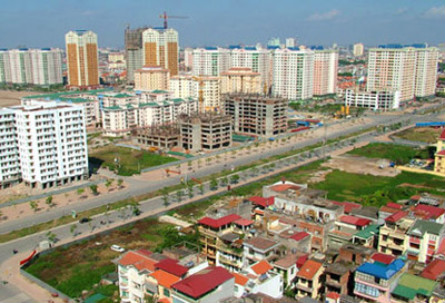Real estate developers in Southeast Asia should incorporate green building concepts to reduce potential financial losses incurred due to climate change-induced disasters and increasing electricity and water costs, a study shows.
 The study, conducted by the World Resource Institute (WRI) and HSBC, assesses the financial risks faced by commercial real estates in Indonesia, India, Malaysia, the Philippines and Vietnam due to energy insecurity, water scarcity and climate change.
The study, conducted by the World Resource Institute (WRI) and HSBC, assesses the financial risks faced by commercial real estates in Indonesia, India, Malaysia, the Philippines and Vietnam due to energy insecurity, water scarcity and climate change.
“The environmental challenges and resource constraints these countries have been experiencing will intensify and may result in increased utility, operating and construction costs for building owners,” said Shally Venugopala a researcher from the Washington-based WRI said in a statement made available to The Jakarta Post.
“Incorporating green design and construction features can save real estate companies money, especially for energy use and can increase occupancy rates and even rent premiums,” she said.
The study, released last Thursday, found that commercial real estate developers in the region did not consider the risk that energy and water may be scarce in a future hampered by climate change.
The study showed that the majority of energy consumed by commercial buildings was for air conditioning and lighting.
HSBC predicted that a 1 percent increase in electricity costs could lead to a US$60,000 per year increase in operating costs for a large commercial building.
The report recommended building owners invest in energy efficient lighting to reduce the financial impact of expected energy price hikes.
HSBC says a 10 percent increase in energy costs would only increase operating costs of a “green” building by half as much as in a regular building.
“Green buildings can protect investors from volatile and increasing electricity prices,” said Nick Robins, head of HSBC’s climate change center of excellence.
Southeast Asian countries are considered at risk from various impacts of climate change, including flooding and water shortages.
Thousands of commercial buildings in Indonesia are located in coastal area.
The report said that an increased frequency of rain, flooding, storms and landslides could raise insurance premiums for buildings.
The report said building insurance premiums shot up 25 percent in Jakarta in 2008 as a result of the 2007 flood in the capital, which inundated 40 percent of the city’s area.
The report said flood barriers, vents and improved drainage systems could minimize the effects of floods and storms on buildings.
The region’s water constraints could also cause utility costs to rise.
In Vietnam, consumption of freshwater has tripled while in Malaysia and India, demand for freshwater has doubled over the past two decades.
“This will not only lead to increased water costs but also effect electricity grids since power stations depend heavily on water,” the report said.
The report also said that the region’s governments should establish and enforce stricter building codes to reduce energy and water consumption.
Business
For building owners, thinking green could save on energy costs
More Business
- Standard Chartered lowers Vietnamese GDP growth forecast to 6%(04/24/2024)
- SBV takes more actions to stabilise foreign exchange rates(04/24/2024)
- Uzbekistan Airways to launch air route from Tashkent to Cam Ranh(04/24/2024)
- HCM City seeks to draw remittances in infrastructure(04/24/2024)
- Two bidders win the first gold auction this year(04/23/2024)
- Auction for gold bullion starts on April 23(04/23/2024)

Leave your comment on this story